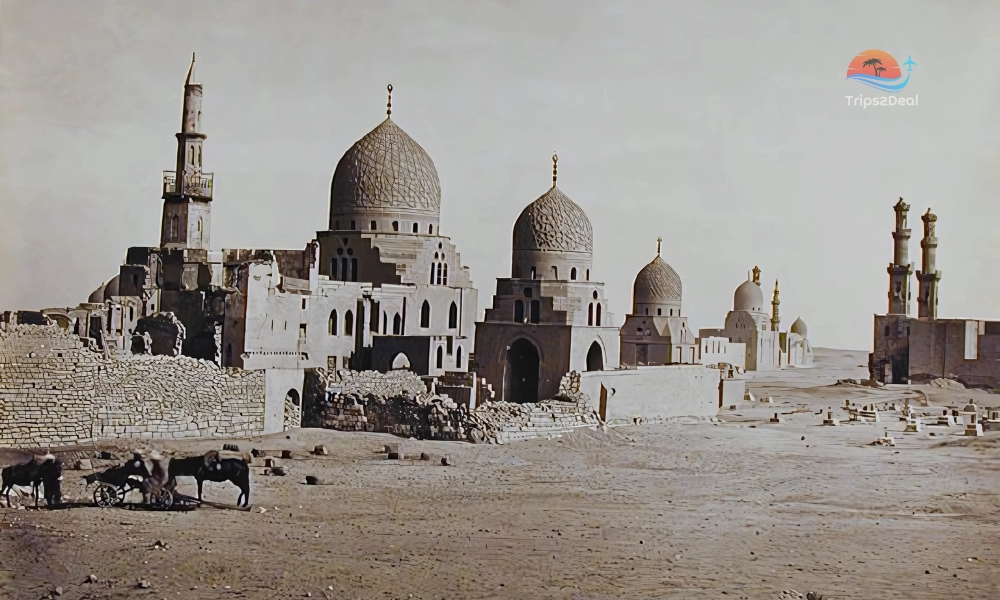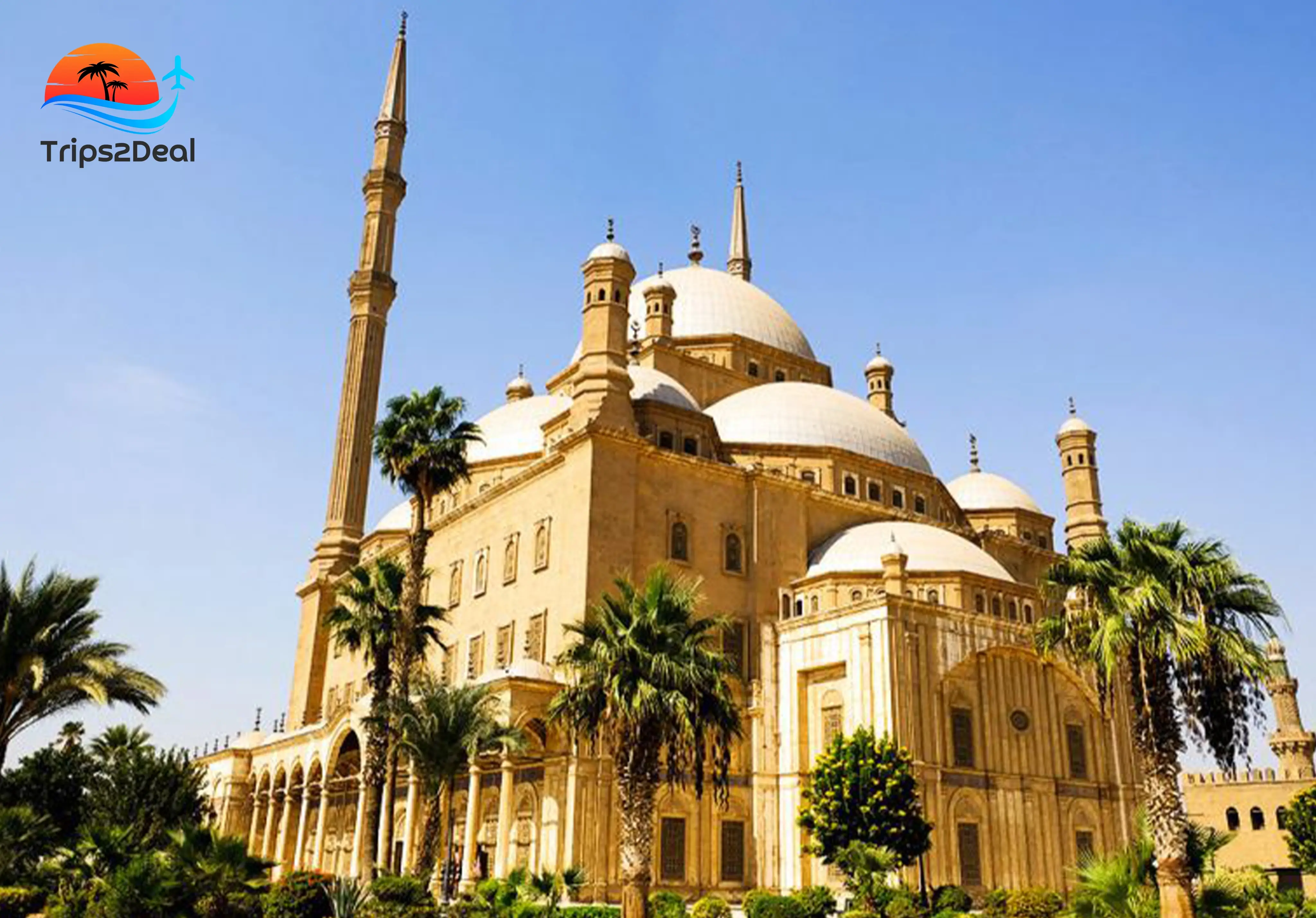Blogs

Al Qarafa
In the shadow of the hustles and bustles of Cairo, there is no other city like Al Qarafa, mainly recognized as Cairo Necropolis, or the City of the Dead. This dimensional structure is not all about final resting for millions, but also nourishing a living space for millions of residents. Al-Qarafa represents the embedment of history, faith, survival, and aesthetics, deeply intersected with Egyptian cemetery culture.
Table of Contents
- Location and Cultural Relevance in Egypt:
- The Origins of Al Qarafa:
- Al Qarafa During the Mamluk and Ottoman Periods:
- Spiritual and Religious Significance:
- Life Inside the City of the Dead:
- Representation of Al Qarafa:
- Modern Challenges Facing Al Qarafa:
- Efforts Toward Preservation:
- Final Recap: A city of the dead is still enriched in Architecture?
Location and Cultural Relevance in Egypt:
Al Qarafa Cairo is more than an iconic symbol; it depicts a traditional legacy showing Egypt’s layered history.
- Location: Situated adjacent to the Mokattam Hills in southeastern Cairo. This area covers a mile of sacred land.
- Function: The most interesting fact about the Al-Qarafa is, it is not an architectural dimension, but here people live, pray, and work as well. This dual functionality makes it unique in whole cemeteries in the world.
- Cultural Importance: Because of a historic value, it has major significance in Egyptian cemetery culture. It all assists in maintaining traditions that align the living with deads. Families visit graves, and pray for loved ones, particularly on Islamic occasions.
The Origins of Al Qarafa:
The Islamic Identity of Egypt aligns with the legacy of Al Qarafa.
- Historical Roots: The necropolis dates back to the 7th century, soon after the Islamic conquest of Egypt. It was established as one of the first Islamic cemeteries in Egypt, a sacred resting ground for Muslim settlers.
- Fatimid Expansion: Under the Fatimids, the site expanded and became a prestigious burial space for scholars, nobles, and religious leaders. Their influence marked the beginning of large-scale tomb construction.
- Notable Personalities: Many well-known notable figures like Imam al-Shaf’i, the Fatimid Caliph, and early Sufis are resting eternally here in this tomb. These figures are the cause, millions of visitors coming each year.

Al Qarafa During the Mamluk and Ottoman Periods:
Two dynasties, Mamluk and Ottoman, transformed the landscape of Cairo Necropolis with lasting legacies.
- Mamluk Contributions: From the 13th to the 16th century, the Mamluk ruled. They constructed grand museums, domed infrastructure, and stone-carved tombs. These are the iconic symbols of Mamluk architecture in Cairo, presenting the Islamic artistic history.
- Ottoman Influence: Though less ornate, the Ottomans introduced more organized urban planning within the necropolis. Their contributions included small mosques and residential tombs, blending function with simplicity.
- Famous Monuments: The Tomb of Sultan Qaytbay and the shrine of Sayyida Nafisa are architectural marvels. These Al Qarafa monuments reflect religious devotion and the historical richness of the era.
Spiritual and Religious Significance:
Al Qarafa is not a constructive cemetery, but a place of sacred hub with centuries of faith and history, because many notable figures are buried there, nothing more.
- Sufi Influence: Many Sufi shrines in Cairo are located in Al Qarafa, where saints and mystics are believed to offer spiritual blessings. Devotees visit regularly to pray and seek healing.
- Cultural Practices: Families gather around tombs to read the Quran, light incense, and maintain the graves. Such visits reinforce deep familial and spiritual connections.
- Famous Tombs of Saints: Millions of pilgrims come and visit the tombs of famous saints like Sayyida Ruqayya and Imam Lathy Ibn Sa’d each year.
Life Inside the City of the Dead:
One of Al Qarafa's most unique aspects is its living population, which adds complexity to its story.
- Why Do People Live Here?
Because of increased urban issues, the middle or lower class population faces major living issues. So, what do they do? They start residing inside museums or unused tombs. These spaces just pass from one generation to another. - Daily Life: Life continues much like any other neighborhood, with cooking, cleaning, school, and even commerce. Children play among gravestones, and families grow gardens in courtyards.
- Personal Stories: Despite the stigma, many City of the Dead residents express pride in their tight-knit community. Their resilience speaks volumes about how life can adapt even in unconventional spaces.
Representation of Al Qarafa:
This place has admired the artwork of creators, scholars, and writers.
- Literary Artwork: A well-known writer, Naguib Mahfouz, has written about Al-Qarafa in his literature. His writing unveils the in-depth spirituality belonging in-way of a poetic manner with this place.
- In Visual Arts: Photographers, artists, and designers unveil the haunting beauty and emotional touch of the area. These inspired artistic frameworks are mentored by Cairo cemeteries' legacy, mainly based on customized themes of survival and honor.
- Symbolism in Pop Culture: In documentaries and films, Al Qarafa becomes a metaphor for Egypt’s socioeconomic divides. Numerous Egyptian documentaries explore its contrasts between heritage and hardship.
Modern Challenges Facing Al Qarafa:
Despite its sacred history, Al Qarafa now faces existential threats.
- Urban Development: The Governments and other real estate construction have destroyed many of the ancient historic buildings. The current Al Qarafa destruction is under hot discussion on the national and international levels.
- Cultural Erosion: Historical monuments are being reduced to rubble, erasing Cairo’s medieval past. Many locals fear the loss of identity and ancestral connections.
- Ongoing Debates: The battle between Cairo heritage destruction and modernization highlights flaws in Egypt's urban planning policies. Preservation advocates demand more inclusive solutions.

Efforts Toward Preservation:
A major favor to those who are still striving for a constant structure establishment of Al-Qarafa, because there are some people who don’t want to lose this heritage.
- Documentation Projects: Local historians and archaeologists are mapping graves, photographing tombs, and translating inscriptions. These efforts create permanent records in case of demolition.
- Local & Global Awareness: Different social organizations are spreading awareness, reporting a legal petition, and assisting the victim communities. Residents and scholars are supporting them in protecting the site.
- UNESCO Involvement: Cultural heritage experts are lobbying for UNESCO recognition. Such a designation would bring global visibility and possibly halt future destruction.
Final Recap: A city of the dead is still enriched in Architecture?
If talk’s about Al Qarafa, the city of the dead, it is not just a dimensional architecture, but a journey of Cairo’s living history. This is the place where Islamic cemeteries in Egypt, and spiritual faith, coincide in dramatic fashion.
- It houses some of Egypt’s most revered saints and scholars.
- It shelters communities often overlooked by mainstream society.
- It holds architectural treasures at risk of being lost forever.
We need to value the Al Qarafa tradition by empowering the cultural heritage of Cairo preservation and assisting those living amongst its tombs. If you've experienced Al Qarafa or wish to learn more, share your thoughts and help preserve this irreplaceable piece of Egypt.





